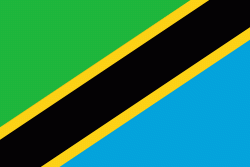Babati District (Babati District)
Babati District was established by dividing the then Hanang District into two districts - Babati and Hanang. The decision produced Babati District, which was officially documented in the Government Official Gazette No. 403 on 1 October 1985. Babati District became autonomous in July 1986 as a District Council.
According to the 2012 Tanzania National Census, the population of the Babati District was 312,392.
The District Commissioner of Babati District is Hadija R.R. Nyembo.
Babati District is located below the Equator between latitude 3° and 4° South and longitude 35° and 36° E. The land surface is characterized by a number of undulating hills and mountains as part of the East African Rift Valley Highlands. Babati District is divided by the Dabil-Dareda escarpment of the Rift Valley, providing diverse climatic and agro-ecological conditions due to a wide range of altitudes from 950 m asl. to 2450 m asl. Most of the soils are of volcanic origin and range from sand loam to clay alluvial soils. In the lower flat lands, like around Lakes Babati and Manyara, alkaline soils predominate. Five agro-ecological zones characterize the district.
About 90% of the population of Babati District live in the rural areas and depend on agriculture and livestock for their livelihood. They are mostly small-scale farmers or agro-pastoralists practicing a semi-traditional farming system characterized by low use of farm inputs. Mixed crop-livestock, mostly maize-based systems are widely found in the district that are intercropped with varying species, such as common beans, pigeon peas and sunflowers, according to altitude and rainfall availability. In the lowlands, paddy rice is cultivated where irrigation is available. Livestock comprise local breeds of cattle, sheep, goats, chickens and cows. Cattle are widely used for draught, for example pulling carts or ploughing fields.
Country - Tanzania
 |
 |
| Flag of Tanzania | |
Many important hominid fossils have been found in Tanzania, such as 6-million-year-old Pliocene hominid fossils. The genus Australopithecus ranged across Africa between 4 and 2 million years ago, and the oldest remains of the genus Homo are found near Lake Olduvai. Following the rise of Homo erectus 1.8 million years ago, humanity spread all over the Old World, and later in the New World and Australia under the species Homo sapiens. H. sapiens also overtook Africa and absorbed the older species of humanity. Later in the Stone and Bronze Age, prehistoric migrations into Tanzania included Southern Cushitic speakers who moved south from present-day Ethiopia; Eastern Cushitic people who moved into Tanzania from north of Lake Turkana about 2,000 and 4,000 years ago; and the Southern Nilotes, including the Datoog, who originated from the present-day South Sudan–Ethiopia border region between 2,900 and 2,400 years ago. These movements took place at about the same time as the settlement of the Mashariki Bantu from West Africa in the Lake Victoria and Lake Tanganyika areas. They subsequently migrated across the rest of Tanzania between 2,300 and 1,700 years ago.
Currency / Language
| ISO | Currency | Symbol | Significant figures |
|---|---|---|---|
| TZS | Tanzanian shilling | Sh | 2 |
| ISO | Language |
|---|---|
| AR | Arabic language |
| EN | English language |














